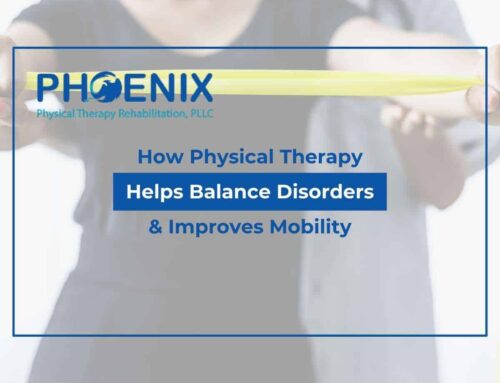Is Spinal Decompression Therapy The Right Treatment For You?
Spinal decompression therapy has emerged as a non-invasive option for individuals grappling with various spinal conditions. This innovative physical therapy aims to relieve pressure on the spine, offering potential relief for different issues. But can anyone use this therapy regardless of its physical condition? Not necessarily.
Spinal decompression is more effective in some conditions. In this article, we’ll explore those conditions and how they can be addressed through this therapeutic technique, shedding light on its potential benefits.
Unlocking The Benefits Of Spinal Decompression Therapy
Spinal decompression therapy is a non-invasive approach designed to address a variety of spinal conditions by alleviating pressure on the spine. At its core, this therapy creates a negative pressure within the intervertebral discs, promoting the retraction of herniated or bulging material and facilitating the flow of nutrients to the affected area.
During a spinal decompression session, a patient typically lies on a motorized table controlled by a trained therapist. The table gently stretches and relaxes the spine, creating intermittent traction forces.
This controlled stretching and relaxation help to create a vacuum effect within the discs, promoting the movement of bulging or herniated material back into place.
Conditions That Respond Well To Spinal Decompression
Spinal decompression therapy has shown promise in addressing various spinal conditions, providing a non-invasive alternative for those seeking relief.
Before looking for physical therapists, read on to see if you have any of these conditions. It can be helpful to see if you’ll need this therapy.
Herniated Discs
Herniated discs, often a source of acute back pain, occur when the inner material of a spinal disc protrudes through the outer layer. Spinal decompression therapy targets this condition by creating a negative pressure within the affected disc.
This negative pressure promotes the retraction of the herniated material, helping to relieve pressure on the surrounding nerves and reduce pain.
Sciatica
Sciatica, characterized by pain along the sciatic nerve, can result from various spinal issues, including herniated discs. Spinal decompression therapy is recognized for its potential in alleviating sciatic nerve pain.
By addressing the underlying causes, such as disc compression, this therapy aims to reduce inflammation and enhance the natural healing process.
Degenerative Disc Disease
Degenerative disc disease involves the gradual wear and tear of spinal discs over time, leading to pain and discomfort. Spinal decompression therapy offers a non-surgical approach to managing this condition by creating an environment that supports disc health.
Through controlled traction, the therapy aims to improve nutrient flow to the discs, potentially slowing down the degenerative process.
Who Can Benefit From Spinal Decompression Therapy?
This physical therapy can offer potential benefits to many people dealing with various spinal conditions or chronic back pain.
It can be beneficial for individuals with persistent back pain who may not respond adequately to other conservative treatments.
It’s also useful for people dealing with chronic discomfort, whether due to age-related wear and tear or other factors.
People diagnosed with specific spinal conditions, such as herniated discs, sciatica, or degenerative disc disease, may be suitable candidates for spinal decompression therapy. As we mentioned before, this technique is designed to target these conditions by alleviating pressure on the spine and promoting a favorable environment for healing.
What To Expect: Inside The Spinal Decompression Process
The spinal decompression process involves a carefully controlled, non-invasive technique designed to relieve pressure on the spine and alleviate symptoms associated with various spinal conditions.
Understanding the key elements of this therapeutic process provides insight into what to expect during a spinal decompression session.
Patient Positioning
The process typically begins with the patient lying down on a motorized table for spinal decompression. The table is equipped with a harness that is secured around the hips to facilitate controlled traction.
Controlled Traction Forces
During the session, the physical therapists adjust the table to create intermittent traction forces. These forces gently stretch the spine and create negative pressure within the intervertebral discs.
Negative Pressure & Decompression
The negative pressure within the discs promotes the retraction of herniated or bulging material. This, in turn, reduces pressure on the spinal nerves, facilitating the movement of nutrients, oxygen, and fluids into the affected disc areas.
Relaxation & Stretching
The table alternates between periods of stretching and relaxation, allowing for controlled decompression. This process was created to enhance the body’s natural healing mechanisms by creating an environment conducive to disc healing.
Duration & Frequency Of Treatments
A spinal decompression session typically lasts between 30 to 45 minutes. The frequency of treatments may vary based on the specific spinal condition and the individual’s response to therapy. Healthcare professionals usually recommend a series of sessions over several weeks for optimal results.
Monitoring & Adjustments
Throughout the process, a trained therapist monitors the patient’s response and adjusts the settings as needed. This personalized approach ensures that the traction forces are applied within safe and comfortable limits.
Understanding The Risks & Considerations Of Spinal Decompression

Spinal decompression therapy may not be suitable for certain spinal conditions, such as fractures, tumors, or advanced osteoporosis. People with these conditions may need alternative treatments, and it’s crucial to consult with a healthcare professional to determine the appropriateness of spinal decompression.
Some people may experience a temporary increase in discomfort after the initial sessions of spinal decompression. This is a normal response as the body adjusts to the therapeutic process. However, this should be monitored and communicated to healthcare providers.
Get Professional Guidance From Experts For Spinal Decompression
The best piece of advice we can give is to ensure professional guidance and individualized care. If you’re seeking a trusted partner on your journey to spinal health, consider reaching out to Phoenix Physical Therapy & Rehab.
Our experienced team is dedicated to providing personalized care and helping you navigate the path towards a healthier, pain-free spine. Take the next step towards well-being – contact Phoenix Physical Therapy & Rehab today!
Phoenix Physical Therapy
Rosedale Location
23520 147th Avenue, Suite 1,
Rosedale, NY, 11422
Brooklyn Location
7510 4th Ave., Suite 3,
Brooklyn, NY, 11209
Phone: (347) 733-1916








